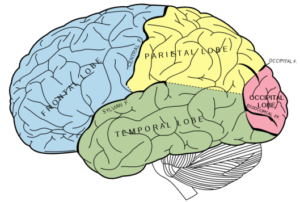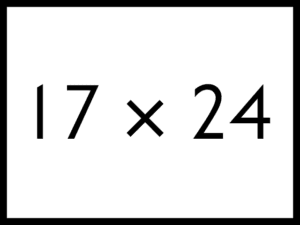Unconscious Bias Handout
 If you’ve been involved in one of our Unconscious Bias workshops this page summarises some of the key points. It also signposts you to other content if you are interested to find out more on the subject.
If you’ve been involved in one of our Unconscious Bias workshops this page summarises some of the key points. It also signposts you to other content if you are interested to find out more on the subject.
The Brain
The human brain is a formidable pattern matching machine. Sifting visual, verbal and behavioural cues, it helps us, for example, to quickly determine whether someone is friendly or hostile. Much of what it does, it does outside of our awareness. Our ‘unconscious mind’ processes 200,000 times more information than our conscious frontal lobes.
Thinking, Fast and Slow
Daniel Kahneman has popularised the notion of two systems in the human mind. In his book Thinking, Fast and Slow (2011) he describes them as follows:
System 1 operates automatically and quickly, with little or no effort and no sense of voluntary control.
System 2 allocates attention to the effortful mental activities that demand it, including complex computations. The operations of System 2 are often associated with the subjective experience of agency, choice, and concentration.

 So, when you look at this photo of a woman, you know she’s angry just as quickly as you recognise that her jumper is dark. You’ve also got a pretty good idea what she might do or say next, and it’s not going to be good. That’s System 1 thinking at work.
So, when you look at this photo of a woman, you know she’s angry just as quickly as you recognise that her jumper is dark. You’ve also got a pretty good idea what she might do or say next, and it’s not going to be good. That’s System 1 thinking at work.
And when you look at this multiplication problem you don’t instantly know the answer, even if you fairly quickly have a rough idea what it might be. You likely know you’re going to have to make an effort to work it out. Either that or you’ll consciously decide to ignore it. That’s System 2 thinking.
System 1 thinking continually guides our thoughts, attitudes and beliefs without our realising. It helps us deal with our limited cognitive capacity. And the rapid categorisation associated with it is often profoundly useful, especially at times of danger, when it can help us make life saving decisions (Joseph E. LeDoux).
But, System 1 thinking can easily lead us astray.
 Try this out.
Try this out.
A bat and ball cost £1.10.
The bat costs one pound more than the ball.
How much does the ball cost?
Reveal the Answer
The answer is that the ball costs 5 pence, but don’t feel bad if you immediately thought it was 10 pence, lots of people do. It’s that System 1 thinking leaping into action. Kahneman would tell us to slow down and let our System 2 take control.
The point is, when we jump to conclusions we can easily misread clues. On those occasions, our unconscious judgements, rather than protecting us from danger, can sometimes lead us to label and stereotype, which ultimately results in prejudice and discrimination.
Unconscious Bias
Unconscious bias is a result of our limited cognitive capacity. The brain’s automatic, unconscious sifting and sorting of visual, verbal and behavioural cues to determine whether people are friendly or not means that we all develop unintentional people preferences.
Over time, our brains associate things. They form neural pathways, which become stronger every time these associations are recognised and unconsciously affirmed. So, we see white, male engineers, our brains learn that engineers are white and male. It’s actually ‘pleasing’ to the brain when this association is affirmed. Come across an Asian, female engineer, something that challenges our unconscious association, and it’s unsettling. It doesn’t fit. As a result, we are more likely to, unconsciously, bias against it.
Where do all our unconscious associations and unintentional people preferences come from? They are formed by our socialisation and experiences, including:
- Media exposure
- Family
- School
- Friends
- Experiences
- Work culture
In light of all of this, and because of the way it works, our brains take short cuts. Without System 2 thinking to keep them in check, they will lead us astray. Repeatedly. But, as we’ve seen, System 2 thinking takes effort and is slow off the mark. One might almost say it’s lazy.
Types of Bias
Our biases take many forms:
- Halo and Horns – Shorthand for positive or negative first impressions. Halo around the head, the person can’t put a foot wrong, horns, they can’t do anything right.
- Affinity Bias – Favouring people who share the same social background, who look and sound like ‘one of us.’ We ignore the faults of people we like and notice the faults of those we don’t.
- Confirmation Bias – Noticing or looking only for evidence which confirms our ideas, good or bad, and ultimately reinforces our original viewpoint.
- Social Comparison Bias – Having feelings of dislike and competitiveness with someone, or groups of people, that are seen as physically, or mentally, better than you.
- Stereotype Threat – Fearing being viewed through the lens of a negative stereotype and of doing something that would confirm it.
- Gender bias – Including being viewed as less competent, over protection, and asserting dominance over.
- Ego depletion – The idea that self-control or will power is exhaustible. Emotional, cognitive and physical effort draws on mental energy. When mental energy is low, self-control is typically impaired.
And there’s lots more. Check out this epic infographic.

Triggers
There can be many triggers for our unconscious biases. Watch out for:
- Ambiguous evidence
- Emotional overload; stress, anger, frustration
- Cognitive overload; complex decision
- Fear of threat
- Emotional and cognitive resources are depleted; tired, low blood sugar
- Short on time
Ways to Avoid
Of course it’s hard to avoid unconscious bias. System 1 thinking is going on all the time and System 2 thinking, which can help, isn’t quick to come to the rescue and keep it in check.
Given all of that, here are some ideas for ways to try to avoid bias:
- Recognise we all have bias
- Stop and think! Learn to mistrust your first impressions
- Don’t ignore difference – be curious
- Challenge negative assumptions and stereotypes
- Don’t consciously try to suppress bias
- Don’t be too hard on yourself – the emotional impact makes bias more likely
- Seek positive examples and role models
- Have fun!
- Keep processes simple
- Schedule demanding cognitive or emotional work away from people decisions
- Tea and biscuits!
- Measure levels of trust, openness and honesty
PAUSE
In his book, Everyday Bias (2014), Howard J. Ross discusses what he calls the need for constructive uncertainty to help overcome the risks from our fast, reflexive biases. He argues that, in a culture that values certainty so much, it is immensely important to find ways to be more uncertain and engage conscious thoughtfulness. We need, he says, to be able to pause and evaluate the circumstances we are in. To this end, Ross uses the word PAUSE as an acronym to act as a reminder.
- P – Pay Attention to what’s happening beneath the judgement (Event vs Interpretation)
- A – Acknowledge or identify your reaction / interpretation / judgements
- U – Understand other possible reactions / interpretations / judgements
- S – Search for the most constructive / empowering or productive way to deal with the situation
- E – Execute your action plan (Act consistently with what makes the most sense)
Avoiding Bias When Recruiting
Recruiting new employees, or promoting within organisations, is one of the most obvious areas where bias can be at play. Here are some shorthand tips for how to minimise the risk:
- Allow for flexibility – flexibility in terms of screening and selecting – only criteria necessary for the job should be listed as required
- Consider use of language – avoid stereotypical language, like go-getter, people person, results driven
- Examine evaluation tools – clear list of relevant criteria
- Look for non traditional evidence – overcoming adverse hardship
- Take your time and reduce distractions – System 2 can’t perform several complex tasks at one time
- Consider the recruitment panel
- Consult suppliers / agencies – How biased are the agencies who provide you?
- Beware the power of the innocuous comment!
Leadership
Here are 6 leadership behaviours that will help avoid the pitfalls of bias in the workplace and unlock innovation:
- Ensure everyone is heard
- Make it safe to propose novel ideas
- Give team members decision-making authority
- Share credit for success
- Give actionable feedback
- Implement feedback from the team
Useful Links
There’s lots of interesting and useful information about unconscious bias and related topics online. Here’s a short selection of links to check out.
Daniel Kahneman – Princeton University Website
Daniel Kahneman – The Guardian Interview, Video (c. 5 mins)
Daniel Kahneman – Talks at Google, Video (c. 1 hour)
Daniel Kahneman – Thinking, Fast and Slow at Amazon
Joseph E. LeDoux – The Amygdala in 5 Minutes, Video (c. 5 mins)
Howard J. Ross – Everyday Bias at Amazon
Howard J. Ross – Six Steps For Dealing With Unconscious Bias, PDF
Howard J. Ross – Unconscious Bias Presentation Excerpt, Video (c. 10 mins)
